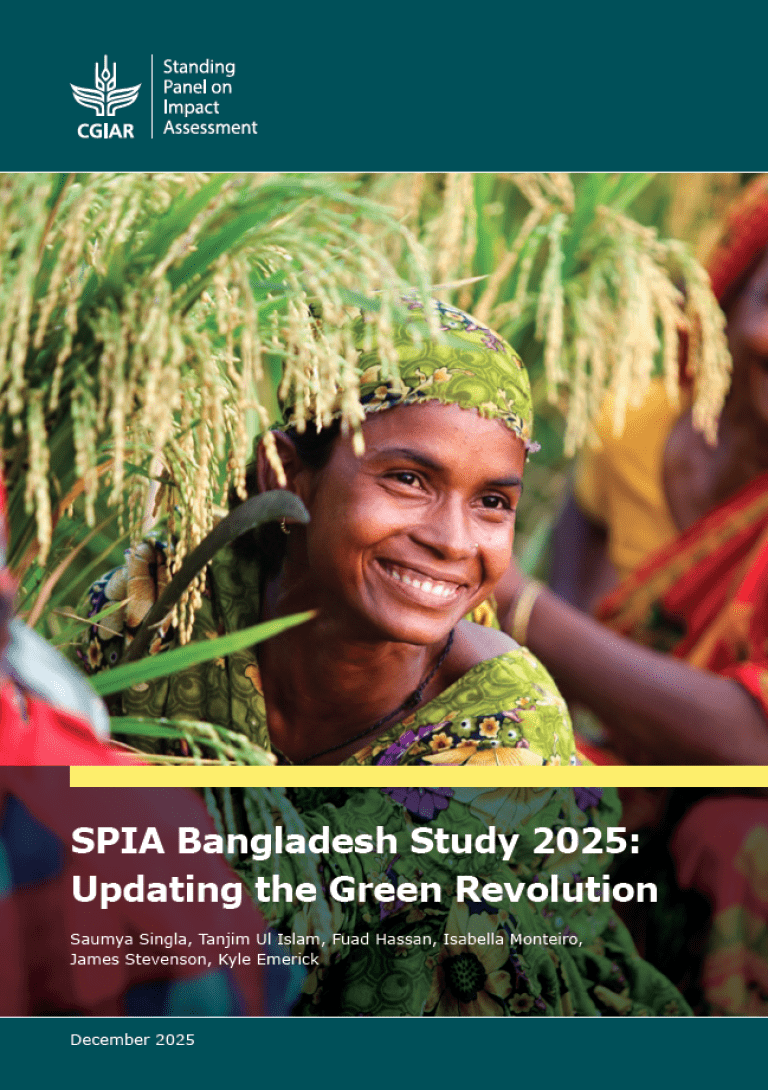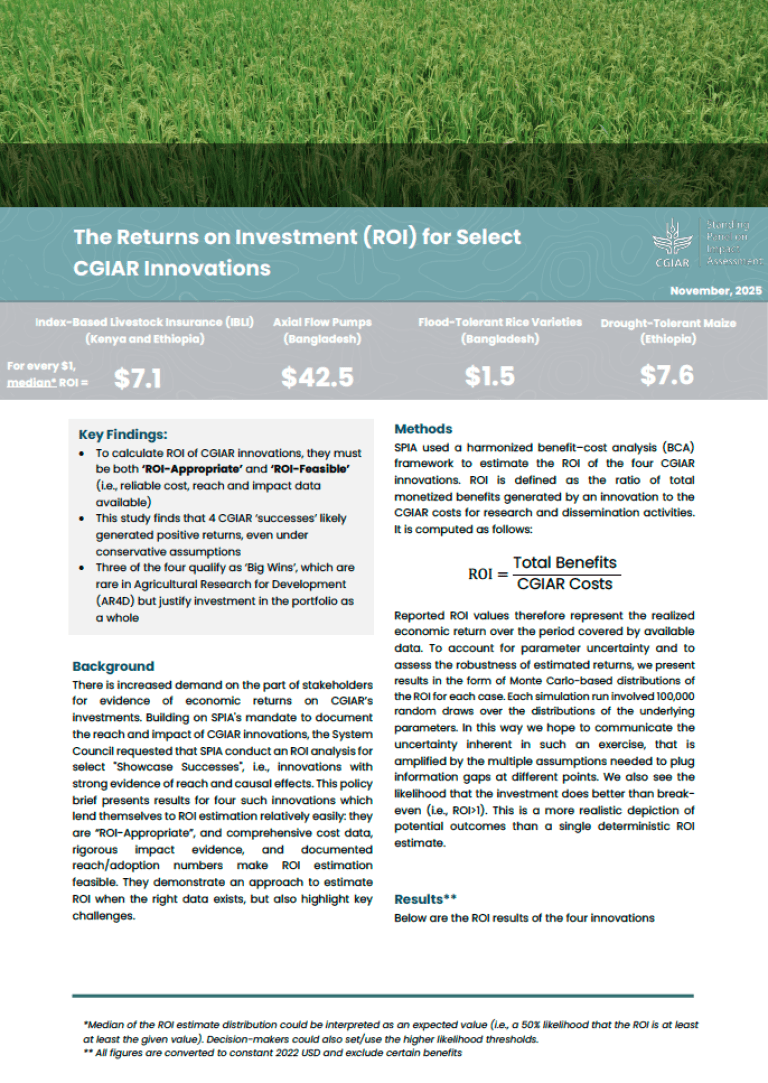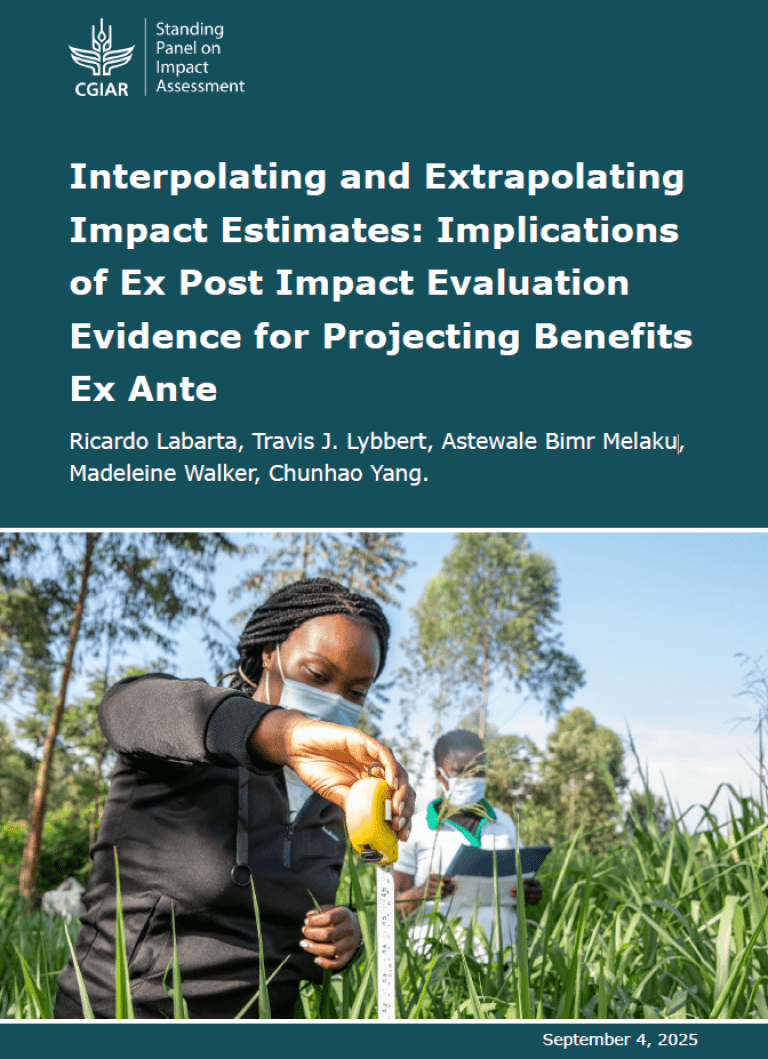Abstract
This technical note compares two different methods of estimating the reach of biofortified crops – namely, orange-fleshed sweet potato (OSP) and high-iron beans (HIB) – in rural Uganda. This is a topic of significant importance to CGIAR given the millions of dollars invested in developing and disseminating biofortified varieties over the past 15-20 years. One method uses a calibrated model with simplifying assumptions to project the number of rural farm households accessing these crops.
The other uses data collected from a nationally-representative sample of rural households in Uganda to estimate consumption, with a sub-sample of households cultivating these crops having samples taken for genotyping, in order to estimate the observed prevalence of these improved biofortified varieties. These two approaches give very different estimates, with the model-based approach indicating far more households reached than the data-driven approach, which align closely with very low levels of OFSP consumption by rural Ugandan households in 2021/22.
The purpose of this note is to explore and explain the discrepancies between the results of these two approaches.
Citation
Labarta, R., Lybbert, T.J., & Stevenson, J. (2025). Estimating the Reach of Biofortified Crops to Farm Households: The HarvestPlus Model vs. National Sampling and Genotyping in Uganda. Technical Note N.11. Rome: SPIA.
Author(s)
Labarta, R., Lybbert, T.J., & Stevenson, J.





